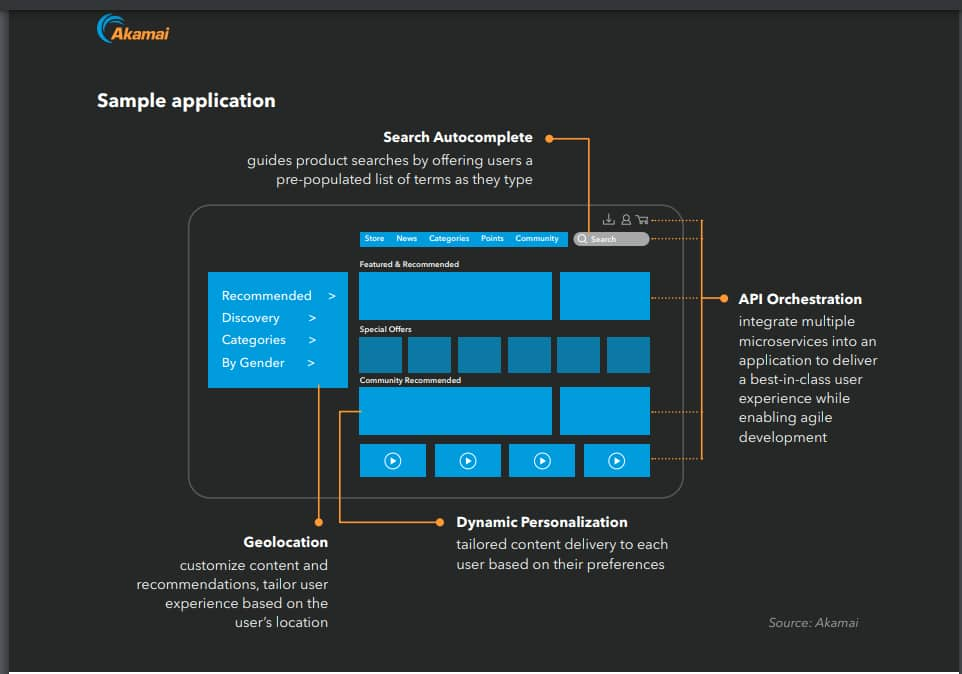Navigating a New Reality: Content Personalization at Scale

The media industry is one of many industries that is undergoing transformation in our digital world. Streaming and online video content continue to gain traction, driving companies to adopt more robust technologies — such as cloud-based infrastructure, advanced analytics, and content delivery networks (CDNs) — to consistently meet viewer expectations.
As engagement habits shift, companies must adapt their strategies accordingly and employ innovative solutions that consistently deliver targeted digital experiences.
Enhancing video performance and user engagement
Akamai recently partnered with Kuaishou, a Chinese short-form video community, to optimize video performance and security for global viewers. By implementing Quick UDP Internet Connections (QUIC), a UDP-based transport protocol, we improved the coordination between Kuaishou’s client and server and Akamai’s global intelligent delivery platform — and tracked a notable change in the video delivery process.
After several iterations, we saw an average QUIC utilization rate of 90%, with improved playback performance and reduced video start failures and lag rates.
Akamai continues to work with Kuaishou to increase QUIC utilization and identify ways to enhance users’ video experiences.
Across industries and around the world, companies must take similar strides if they want to compete. Innovation is everything in the digital age — and an elevated user experience can be the key to business success.
Personalization is now paramount
Technology has also enabled user personalization at the most granular level possible — from how a web page looks to how systems display search results. Customers increasingly anticipate tailored interactions when accessing content that relates to their interests and needs.
Media companies must adapt accordingly by developing solutions to meet expectations and maintaining positive digital relationships with their target customer base.
Personalization can boost user engagement
It’s important to prioritize content personalization for its ability to boost user engagement across channels, and maximize performance, data autonomy, and infrastructure on a global scale.
For example, hyperlocalization will push information that is specific to a particular location; and as interest in localized events rises, viewership of shows and news broadcast in regional languages increases in tandem.
Whether the goal is to increase revenue or establish deeper user trust, it’s important to look for ways to minimize latency and push business logic as close to the user as possible, without paywall restrictions or the need to switch interfaces — enhancing personalized experiences in the process.
Streamlining user interactions can enhance user experiences
A modern application requires a modern CDN to ensure fast performance and delivery. Depending on how a CDN distributes data and business logic to users, media companies can provide varying levels of scalability (Figure).
 Figure: How functions at the edge translate into a real-world application
Figure: How functions at the edge translate into a real-world application
The CDN no longer sits in front of an application, but is directly embedded into its architecture with capabilities to shape and power content personalization. This provides numerous benefits.
Optimized performance: By being built into the application, a CDN reduces latency and helps deliver quicker loading times for videos and live-streaming content shown to large audiences
Targeted content delivery: More control over content delivery allows you to adjust how you distribute information according to several factors, such as location, network compatibility, and user preferences
Flexibility for increasing demands: A CDN lets you scale your infrastructure to meet evolving needs and viewer patterns; for example, if there’s a popular live-streaming event that draws high traffic, the application won’t feel as much strain
Analytics and insights: A CDN-powered application can collect important user metrics like video performance and viewer engagement to improve content personalization — in fact, higher-quality streams are reported to create 19.8% more emotional engagement in viewers, according to galvanic skin response test results
Closer to the edge, closer to growth
With CDNs built into application architecture, companies can increasingly adopt robust edge computing solutions to meet their business goals. For example, when edge servers are closer to users, it helps decrease network latency and speed content delivery, whether through uninterrupted video playback or less frequent buffering. This can increase incoming traffic, which can be handled easily by the edge’s scalability, and boost user satisfaction.
By reducing the time needed to collect and analyze data, edge platforms use real-time insights to improve response time and better identify user interests and preferences through keyword searches and geolocation. Dynamic personalization enables you to use this information to identify the types of videos that resonate most with end users, or to deliver product recommendations and promotions based on purchase history or wish lists.
With better visibility about individual preferences, you can continue to push media that accommodates viewer interests, increasing engagement as a result.
Creating memorable digital experiences
Content personalization helps you connect with customers at a deeper level by improving customer experiences and boosting revenue. Moving everything closer to the edge is essential for reaching viewers and offering content relevant to their needs in real time.
An extensive, global network of edge servers helps alleviate the challenges of content delivery, streamlines digital operations, and creates a memorable digital experience for users worldwide.
And check out our other Media inSights for updates about the media and entertainment industry in Australia and New Zealand, ASEAN, and India.



